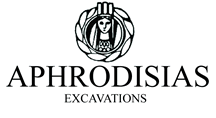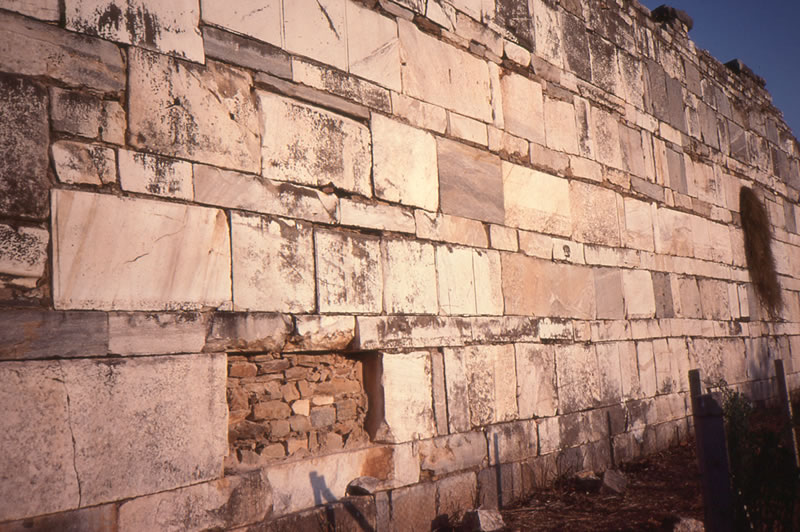History
Late Antiquity: AD 300-600
The flourishing city of the early and high empire had a long and prosperous second life in late antiquity, AD 300-600, from the reign of Constantine to that of Heraclius, until the urban collapse of the seventh century. This was a distinctive and different life, and archaeology and images can help us to grasp some of its essential features. Constantinople became the new capital of the eastern empire. There was a new style of Roman government, and Aphrodisias became part of it in c. AD 300 as, the metropolis or capital of the new province of Caria, and so the seat of a governor sent by the imperial administration. Christianity became the state religion, and traditional pagan polytheism in the city fought hard to preserve its ancient soul.
In large part due to its status as a provincial capital, Aphrodisias was able to maintain the basic fabric of a functioning classical-looking cityscape up to c. AD 600. There was enough built already. The emphasis was now on maintenance, adaptation, and remodelling for new functions. This could be more or less far-reaching, depending on the function. Many buildings were maintained, repaired after periodic earthquakes and kept as they were. The Tetrastoon in front of the Theatre, for example, was restored by a governor in c. AD 360. And the second-century Tetrapylon was taken down, restored, and put back up in the late fifth century — a major feat of engineering. The community’s pride remained connected to the welfare of its monuments.
The only significant new building project after the mid-third century was the City Walls, constructed on the governor’s initiative in the AD 350s. The walls were built, however, not with newly cut stone from the quarries, but from spolia, that is, re-used blocks taken from decommissioned buildings in the city and its cemeteries. The wall-building project was thus typical of late antique building in two respects: spolia construction, and the role of the governor.
Some buildings were adapted to new functions. After the decline of traditional athletics, the Stadium, for example, was turned into an amphitheatre in the late fifth century by building a curved arena wall across its east end. The most highly charged and far-reaching adaptation of an old building, however, was the eventual conversion of the old Temple of Aphrodite into a Christian church (of St Michael) in the middle or later fifth century. The new power of the Christian authorities in the city (there was a bishop in residence from the fourth century) is seen too in the defacing in this period of offensive pagan cult images and images of sacrifice — for example, in some of the reliefs of the Sebasteion.
Late antiquity was a period in which local notables spent more on their houses, and the domestic archaeology shows intensive architectural refurbishing and decoration in this period in several town houses, including the Atrium House, the North Temenos House, the Triconch House, and the House of Kybele.





